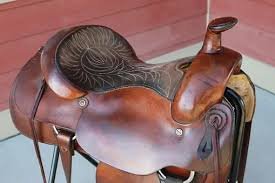Choosing the right western saddle is more than just picking a pretty piece of tack; it’s about ensuring comfort and safety for both you and your horse while expressing your individual riding style. In this comprehensive guide, we’ll break down the different western saddle styles, essential fitting tips, and help you find the perfect match for your riding needs.
Understanding Western Saddle Styles
The western saddle has a rich history rooted in cowboy culture and ranching. Over time, various styles have evolved to cater to specific disciplines and rider preferences. Here it is: High-Quality Western Saddles for Sale
Here’s a quick overview of the most common types:
-
Trail Riding Saddles:
Designed for comfort during long hours in the saddle, these saddles typically have a deep seat, padded skirts, and a high cantle for back support. If you’re looking for tips on nurturing your child’s interest in athletics, check out our guide on How to Encourage Your Children’s Athleticism.
-
Roping Saddles:
Built for working cowboys, roping saddles feature a sturdy horn for securing a lasso, a low cantle for easy dismounts, and a reinforced tree for handling the stress of roping cattle.
-
Barrel Racing Saddles:
These lightweight saddles have a high cantle and deep seat to keep the rider secure during fast turns around barrels. They often have a slick fork to prevent the rider’s leg from getting caught.
-
Ranch Saddles:
Versatile and durable, ranch saddles are designed for everyday ranch work. They often have a larger horn for securing a rope or pack, a comfortable seat for long days, and a sturdy build to handle various tasks.
Essential Saddle Fit Tips for Your Horse
A poorly fitting saddle can cause discomfort, pain, and even injury to your horse. Here are some key factors to consider when assessing saddle fit:
- Gullet Width: The gullet should be wide enough to clear your horse’s spine and allow for free movement.
- Wither Clearance: The saddle should have enough clearance over the withers to prevent pressure points.
- Bar Angle: The angle of the bars should match the angle of your horse’s back to distribute weight evenly.
- Tree Length: The tree should not be too long or too short for your horse’s back.
- Panel Contact: The panels should make even contact with your horse’s back along the entire length of the saddle.
If you’re unsure about saddle fit, consult a professional saddle fitter. They can help you assess your horse’s conformation and recommend the appropriate saddle size and style.
Finding the Perfect Saddle for You
Choosing a saddle that’s comfortable for you is just as important as finding one that fits your horse. Consider the following factors:
- Seat Size: The seat should be the right size for your build to ensure a balanced and secure ride.
- Seat Style: Some riders prefer a deep seat for security, while others prefer a flatter seat for easier movement.
- Stirrup Position: The stirrups should be positioned to allow for a comfortable leg position and proper balance.
- Horn Size: If you plan on roping or securing a pack, choose a saddle with an appropriate horn size.
- Personal Preference: Ultimately, the best saddle for you is the one that feels comfortable and allows you to ride confidently.
Caring for Your Western Saddle
Proper saddle care is essential to prolong its lifespan and maintain its beauty. Regularly clean and condition the leather, store the saddle in a cool, dry place, and have it checked by a professional saddle maker if you notice any damage or wear.
Conclusion
Choosing the perfect western saddle is an investment in both your comfort and your horse’s well-being. By understanding the different saddle styles, prioritizing proper fit, and selecting a saddle that suits your riding needs, you’ll be well on your way to enjoying countless hours in the saddle.


